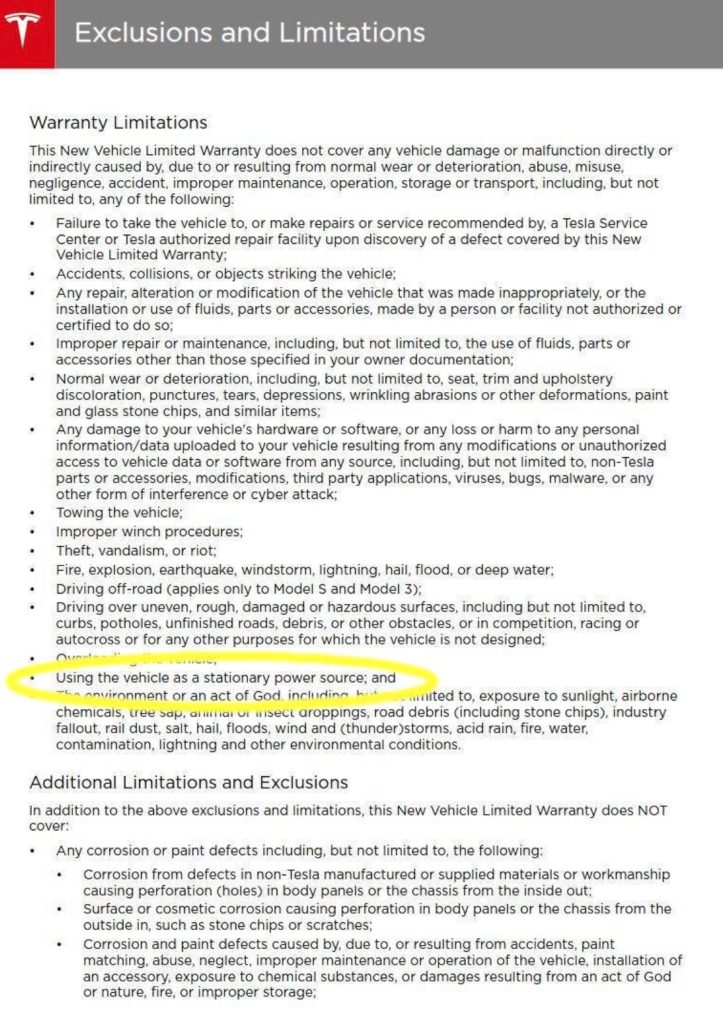Tesla is voiding your warranty if you try to power your home with your electric car battery pack – something that more people have been looking into following power outages in some areas in the US.
While Tesla vehicles are not equipped with bidirectional charging enabling vehicle-to-grid or vehicle-to-home features, there’s actually a way to power some devices using your Tesla vehicles.
It’s as simple has plugging a 2,000-watt inverter to your car’s 12-volt battery.
Update: As Tesla hacker green points out, it is better to connect to the 12-volt system through the penthouse under the backseat.
Through the low voltage architecture, you can get the power from the main battery pack and power several devices on the inverter.
It’s something a lot more Tesla owners have been looking into lately following some tough weather in some regions in the US causing power outages.
Tesla owner Bob Schatz described his own setup in a post on the Tesla Owners Club Portland Facebook group (via Green on Twitter):
“So if you are out of power from the storm you can power parts of your home from your car. here I’m using a 2,000 watt inverter from Harbour Freight for $170. Connect to your battery, the shorter the wires the better. Then I have an extension chord to my gas furnace to power the blower and furnace computer. That alone draws about 1,100 watts. Then I still have enough for my refrigerator and a few lights.”
A setup like that on a Tesla vehicle can provide hours of power, but Schatz found out that Tesla doesn’t like it.
Over the next few days, the vehicle started sending alerts that the 12-volt battery needed replacing despite the shop saying that the battery seemed strong.
The Tesla service center said that the battery needed replacing, but they actually found this post on the Facebook group and said that his setup voided the warranty.
Tesla hacker Green found the relevant section on Tesla’s warranty:

Tesla’s warranty states that you can’t use your vehicle “as a stationary power source.”
Electrek’s Take
The moral of the story: if you are going to do that, don’t post it on social media because Tesla will find it.
While I had my issues with Tesla’s warranty before, I understand them in this case since the vehicles are not made for that.
That’s a shame, though.
We see a lot of automakers building bi-directional chargers into electric vehicles these days to directly access the main battery pack.
Just today, we reported on the unveiling of the new Hyundai Ioniq 5, which is equipped with that technology.
Tesla has been reticent in the past about integrating that capacity in its vehicles, but Tesla CTO Drew Baglino recently said the automaker plans to implement it in future vehicles.
FTC: We use income earning auto affiliate links. More.
Subscribe to Electrek on YouTube for exclusive videos and subscribe to the podcast.